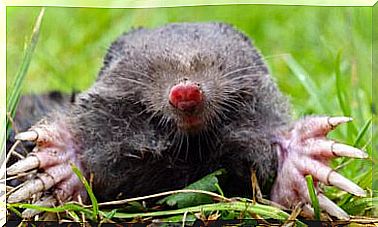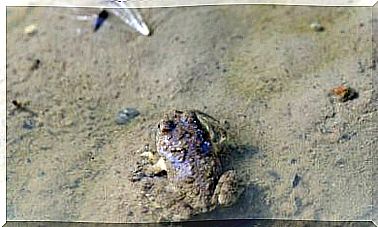5 Sea Snakes
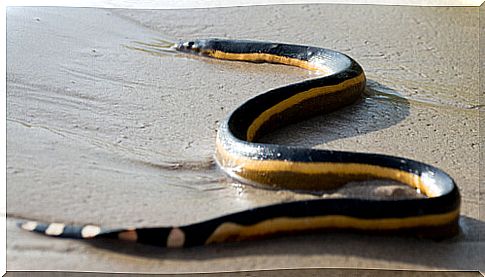
They inhabit the coasts and beaches after evolving from their terrestrial ancestors, and some of them cannot even move on the sand or rocks … They only know how to swim! In the following article we will tell you about five species of sea snakes and all their characteristics.
Examples of sea snakes
With an eel-like appearance and an oar-shaped tail, many of the sea snakes produce the most potent poisons of the entire family. Although they live in the always warm water of the Indian and Pacific Oceans, they do not have gills like fish and must rise to the surface to breathe. They can last up to five hours submerged without problems.
Some of the sea snakes are:
1. Yellow sea snake
It is the most famous of the sea snakes, which inhabits the Pacific coastlines, either in tropical or subtropical areas. It needs warm water to survive (between 16 and 30 ° C).
The yellow sea snake – the photo that opens this article – can be one meter long, has a laterally compressed body to swim without problems and its head is narrow with somewhat bulging eyes.
The color of its narrow scales – which make it difficult for it to move on land – is dark gray with yellow lines on the tail and belly of the same color. Although it is not very aggressive, its venom is toxic to people.
2. Broad-nosed sea snake
Their scientific name is Laticauda colubrina and they live in the tropical waters of the Indo-Pacific, where they are caught by fishermen for their contrasting colored skin or as food. Their range is quite wide and they can be seen in large groups hunting giant horse mackerel.
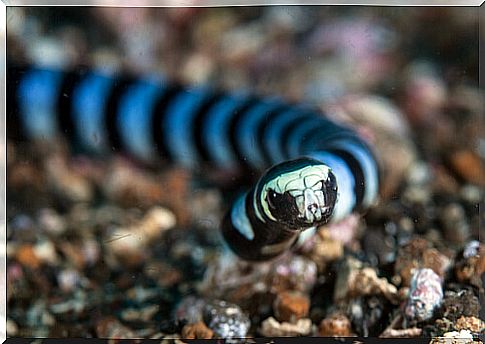
The broad-nosed sea snake is light in color on the belly, and dark and bluish on the back, with black lines. The muzzle is broad and yellow, as are the sides of the head and above the eyes.
Females are larger than males, they can reach 140 centimeters and 90 centimeters, respectively. Regarding their habits, it is worth noting that they usually go ashore to drink fresh water and that they are not aggressive towards divers, although they are very poisonous.
3. Black-headed sea snake
This is another of the best known species of sea snakes, which descends from the terrestrial ones that inhabit Australia, such as coral (one of the most poisonous in the world). Furthermore, its toxicity ‘rivals’ the dreaded black mamba, as it can be even more deadly.

The black-headed sea snake, native to the western Pacific Ocean, is large: it can measure 260 centimeters. Its body is yellow and black with stripes, except for the head which, as the name suggests, is completely black. It swims quickly and can remain submerged for several hours on the seabed.
4. Blue-lipped sea snake
It belongs to the Laticauda group and its range is quite wide within the Indian Ocean : India, Sri Lanka, Thailand, Indonesia, the Philippines, Malaysia, Japan, Polynesia and the Solomon Islands.
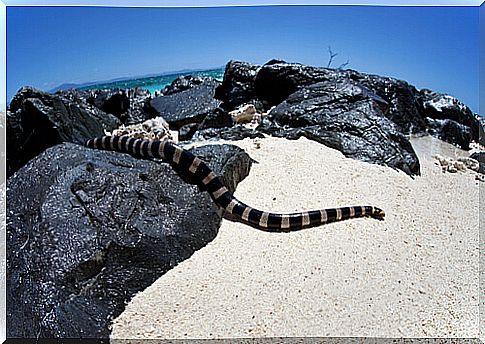
The blue-lipped sea snake are large in size, as they can exceed two meters in length (the tail is the same as the body). Females are longer than males and one of the main characteristics of their face is that they have lateral nostrils. The scales are striped blue and black, like the other marine ones.
5. New Caledonian sea snake
The last of the sea snakes on this list belongs to the Elapidae family and is distributed not only by the New Caledonian archipelago, but also by the Loyalty Islands, New Zealand, the Caroline Islands and India.

The New Caledonian Sea Serpent prefers shallow waters near coral reefs, although they can dive up to 80 meters. From time to time it goes ashore, especially the females that lay their eggs there. They feed on eels and can form colonies of up to 30 individuals.
